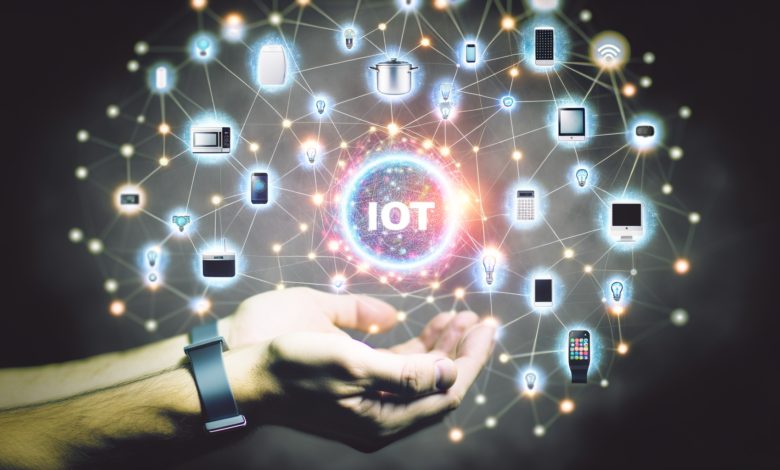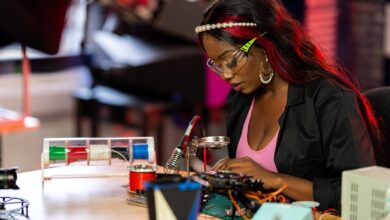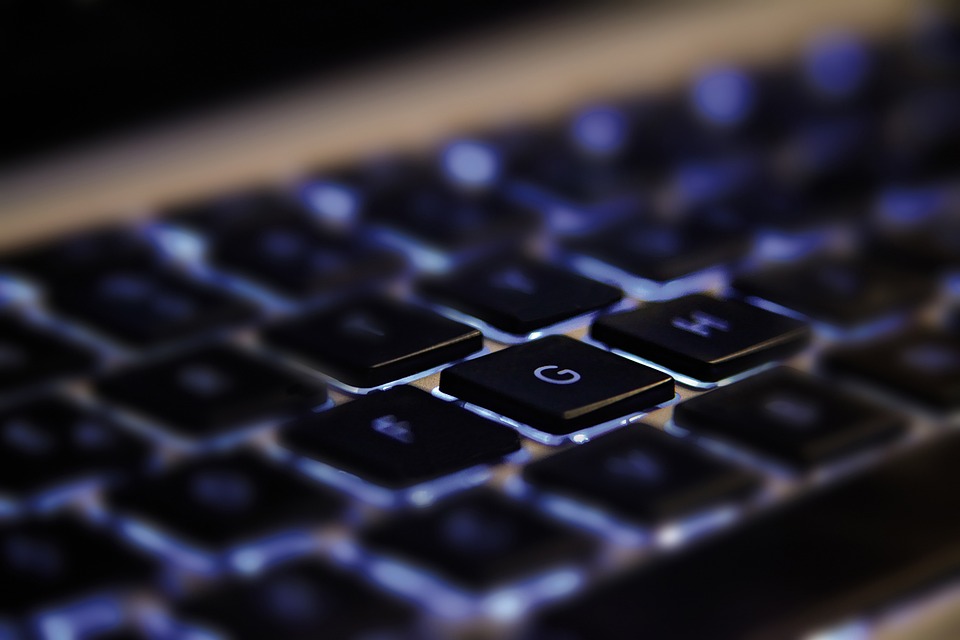
Exploring the Interconnected World of IoT
The Internet of Things, commonly known as IoT, represents a paradigm shift in the way devices communicate and operate. This article will explore the intricate web of connectivity that defines the IoT, unraveling its significance across various sectors and implications for the future.
The Dawn of IoT
The Dawn of IoT:
The Internet of Things (IoT) represents a revolutionary epoch characterized by a network of devices interconnected through the internet, enabling them to collect, share and analyze data. This innovative ecosystem traces its origins to a synergy of visionary concepts and technological advancements. Among the earliest instances demonstrating the potential of interconnected devices was a modified Coca-Cola vending machine at Carnegie Mellon University, connected to the ARPANET in the 1980s. This machine was ingeniously programmed to report its inventory and whether newly loaded drinks were cold, marking a rudimentary yet significant step towards connected technology.
Another cornerstone in the evolution of IoT was the concept of ubiquitous computing, as envisioned by Mark Weiser in the late 20th century. Weiser, often regarded as the father of ubiquitous computing, proposed a future where technology becomes an invisible backdrop to everyday life, seamlessly integrated into our environments to enhance our interactions with the physical world. Weiser’s vision was characterized by the creation of environments saturated with computing and communication capabilities, yet gracefully integrated so as to be unobtrusive. This vision underpins the development of IoT, which endeavors to embed intelligence into our everyday objects, making “smart” environments a reality.
The foundational ideas of connected devices and ubiquitous computing have profoundly shaped the current landscape of IoT. From the ARPANET-connected vending machine, we now have homes, cities, and industries equipped with a multitude of sensors and smart devices that communicate with each other to optimize efficiency, enhance security, and improve quality of life. These developments reflect the transition from standalone intelligent devices to a comprehensive, interconnected ecosystem, a testament to the fulfillment of Weiser’s vision.
Moreover, the progression towards IoT was facilitated by significant technological advancements, including the miniaturization of processors, improvements in wireless communication technologies, and the advent of cloud computing. These technological strides made it feasible to embed computing power into everyday objects at a minimal cost, further paving the way for the expansion of IoT applications across various sectors.
In understanding the dawn of IoT, it is crucial to acknowledge that these early concepts and innovations laid a solid foundation for what has become a transformative force in our society. The foresight of early pioneers, coupled with continual technological advancements, has culminated in an interconnected world where the possibilities for innovation and improvement seem boundless. This setting provides the backdrop for the emergence of smart devices, marking a new chapter in the narrative of IoT, where ubiquitous computing begins to significantly manifest in daily life, reshaping our interactions with technology and the environment around us.
Smart Devices and Ubiquity
Building upon the foundational concepts of IoT and the early connected devices like the ARPANET-connected vending machine, the world witnessed a remarkable transformation towards smart devices and ubiquity. The evolution from simple connected devices to an intricate network of smart devices underscores a seamless implementation of Mark Weiser’s vision of ubiquitous computing. Smartphones were the vanguards in this revolution, encapsulating computing power that far surpassed the early desktops, all within the confines of our palms. Their emergence was a pivotal moment, heralding a new era where connectivity and computing capabilities began to shrink in size but expand in functionality and scope.
The exponential growth in the capabilities of microprocessors and sensors, coupled with advancements in wireless communication technologies, laid the groundwork for this evolution. As processing power became cheaper and more compact, and as Wi-Fi and Bluetooth technologies became more powerful and energy-efficient, embedding intelligence into everyday objects became not only feasible but also economical. This technological convergence enabled devices to communicate, analyze, and act upon data autonomously, embodying the principles of ubiquitous computing where technology becomes an invisible but integral part of our daily lives.
Smart homes represent a quintessential example of this shift towards ubiquitous computing. Initially, the concept of a smart home might have seemed futuristic, but today, it is a reality for many. The evolution from simple programmable devices like thermostats and sprinkler systems to interconnected, intelligent systems controlling lighting, security, and HVAC systems highlights the transformative impact of IoT. These smart home ecosystems are not just about convenience; they epitomize the essence of IoT, which is to enhance efficiency, security, and quality of life. Through IoT, devices within a smart home can learn from our habits and adjust themselves accordingly, offering a seamless, intuitive way to interact with technology.
The pervasiveness of smart devices has significant implications for both individuals and society. On one hand, they offer unprecedented levels of convenience, efficiency, and personalization. On the other hand, they raise important questions about privacy, security, and the digital divide. As smart devices continue to proliferate, entering every aspect of our daily lives from wearables that monitor our health to smart cities that optimize traffic flow, they underscore the omnipresence of IoT. This ubiquity, enabled by relentless advancements in technology and the miniaturization of computing, brings to life a world where every object has the potential to be smart, connected, and responsive to our needs, heralding an era defined not by the internet of computers, but by an Internet of Things.
IoT in the Modern Era
IoT in the Modern Era:
The Internet of Things (IoT) has progressed from the concept of smart devices to a fully interconnected ecosystem, permeating virtually every facet of modern life. The current state of IoT is marked by its deep integration into consumer markets and healthcare systems, where it serves not only to enhance efficiency but also to foster new opportunities and models of engagement.
In consumer markets, the role of IoT can be seen most vividly within smart homes. Here, IoT devices function in concert to provide homeowners with unprecedented control and convenience. From smart thermostats that learn a household’s routines to optimize heating and cooling, to refrigerators that track inventory and suggest recipes or even order groceries, the impact of IoT is profound. These devices rely heavily on wireless communication technologies to connect with the internet and each other, creating a network that can be managed through smartphones or voice commands. The symbiotic relationship between IoT and machine learning is pivotal within this context. Machine learning algorithms process vast amounts of data generated by IoT devices, enabling the system to anticipate user needs and respond in real-time – turning the home into an intelligent environment that adapts to its occupants.
The healthcare sector has also seen a transformative impact due to the integration of IoT. Wearable devices monitor patient health metrics in real-time, transmitting data to healthcare providers for early detection of potential health issues. IoT devices within hospitals automate inventory management, track equipment, and ensure that conditions within storage facilities for medicines and samples are optimal. The data collected support healthcare professionals in making more informed decisions, ultimately improving patient outcomes.
Furthermore, IoT’s integration into healthcare and consumer markets has necessitated advancements in wireless communication technologies. The deployment of 5G networks, for instance, promises to significantly enhance the capacity, speed, and reliability of IoT communications, enabling more devices to connect and interact seamlessly.
The symbiosis of IoT with other technologies represents a paradigm shift in how we interact with the world around us. However, this interconnectivity introduces complex challenges, particularly concerning security and privacy. As more devices come online, the vulnerability of systems to breaches and unauthorized access escalates, raising concerns that will be addressed in the following chapter. The balance between leveraging IoT’s full potential and safeguarding against these risks is a dynamic area of focus, underpinning the evolution of IoT in the modern era.
Security and Privacy Concerns
As the Internet of Things (IoT) continues its rapid expansion, integrating into consumer markets and healthcare systems alike, it brings with it a host of privacy and security concerns that cannot be overlooked. The inherent connectivity and the sheer volume of data IoT devices generate and process have made them a tempting target for cyberattacks, while also raising serious privacy issues. The wireless nature of IoT communication adds another layer of complexity, as information is more susceptible to interception during transmission.
Recognizing these concerns, both industry leaders and government bodies have been proactive in addressing the vulnerabilities associated with IoT growth. On the industry side, there has been a concerted effort to develop more robust security standards and protocols specifically designed for the IoT ecosystem. These include end-to-end encryption for data in transit, secure booting to ensure the integrity of the IoT device on startup, and the implementation of access controls to restrict who can interact with the device.
In addition to these technical measures, there has been a push toward the adoption of best practices in software development for IoT, including regular updates and patches to address known vulnerabilities. The concept of “security by design,” where security considerations are integrated at each stage of the IoT device’s lifecycle, from conception through to deployment and maintenance, is gaining traction.
On the governmental side, regulatory frameworks are being formulated to protect consumers and ensure that IoT devices meet certain security and privacy standards. The European Union’s General Data Protection Regulation (GDPR) is one of the most notable examples, imposing strict rules on data protection and privacy for all individuals within the EU, affecting IoT devices that collect personal data. In the United States, the National Institute of Standards and Technology (NIST) has released a series of guidelines aimed at helping organizations manage IoT security risks.
Despite these efforts, the decentralized and often internationally distributed nature of IoT devices complicates regulatory enforcement and standardization. The challenge lies not only in creating effective standards and regulations but also in ensuring they are globally harmonized to prevent gaps in security protocols that could be exploited by cybercriminals.
Looking forward, as IoT continues to evolve and become even more deeply integrated into various sectors, the importance of security and privacy cannot be understated. The balance between fostering innovation and ensuring that IoT environments are safe and trustworthy will be crucial. As we move into discussions on the future perspectives and IoT evolution, understanding the foundations laid down by current security practices and regulatory efforts will be key to navigating the challenges and opportunities that lie ahead in the interconnected world of IoT.
Future Perspectives and IoT Evolution
As the Internet of Things (IoT) continues to burgeon, weaving itself into the fabric of our daily lives, its trajectory promises a fusion of technological innovations with practical applications across myriad sectors. The following outlook delves into how this evolution could potentially unfold, highlighting the integral role of evolving standards in sculpting the landscape of IoT implementation.
The relentless pace of innovation in IoT technology is expected to lead to quantum leaps in computing capabilities, sensor technologies, and artificial intelligence (AI) integration. These advancements will not only enhance the efficiency and functionality of IoT devices but also expand their application horizons. For instance, the advent of more sophisticated sensors could unlock the potential for IoT to play a pivotal role in environmental conservation, enabling real-time monitoring of pollution levels, deforestation, and wildlife movements on an unprecedented scale. Similarly, leveraging AI, IoT devices could become more autonomous, capable of making data-driven decisions without human intervention, thereby paving the way for more intelligent and self-sufficient systems in domains like smart cities, healthcare, and agriculture.
The integration of IoT into various sectors is anticipated to deepen, spurred by the compelling need for automation and data-driven decision-making. In healthcare, IoT could revolutionize patient care through enhanced monitoring systems, telemedicine, and personalized treatment plans based on real-time data. Meanwhile, in agriculture, IoT technologies could lead to precision farming, drastically reducing resource wastage and increasing crop yields through the optimal usage of water, fertilizers, and pesticides.
However, the expanding footprint of IoT also necessitates the evolution of standards and regulatory frameworks to address the complexities introduced by these technologies. Standards regarding data privacy, security, interoperability, and reliability must evolve in tandem with technological advancements to mitigate risks and ensure a secure and efficient IoT ecosystem. The development of such standards will likely be a collaborative effort among industry stakeholders, regulatory bodies, and standard-setting organizations, aiming to foster an environment of trust and mutual benefit.
Furthermore, evolving standards will play a crucial role in addressing the interoperability challenges within the IoT landscape. As the number of IoT devices skyrockets, ensuring they can communicate and interact seamlessly across different platforms and ecosystems will become increasingly vital. This necessitates a concerted effort towards the adoption of universal standards and protocols that can facilitate interoperability and smooth integration, thereby unlocking the full potential of IoT innovations.
In conclusion, the future trajectory of IoT is poised to be shaped by a confluence of technological innovations, deeper sectoral integration, and the evolution of standards. As IoT technologies become more embedded in our daily lives, their transformative impact will be contingent upon addressing the challenges of security, privacy, and interoperability through robust and forward-thinking standards. This will not only safeguard the immense benefits IoT promises but also pave the way for a more connected and efficient world.
Conclusions
As an amalgam of diverse technologies, IoT is reshaping our world into a smarter and more interconnected space. While IoT presents vast potential for innovation and efficiency, it also demands vigilant attention to security and privacy to ensure the transformative power of IoT is harnessed responsibly.



